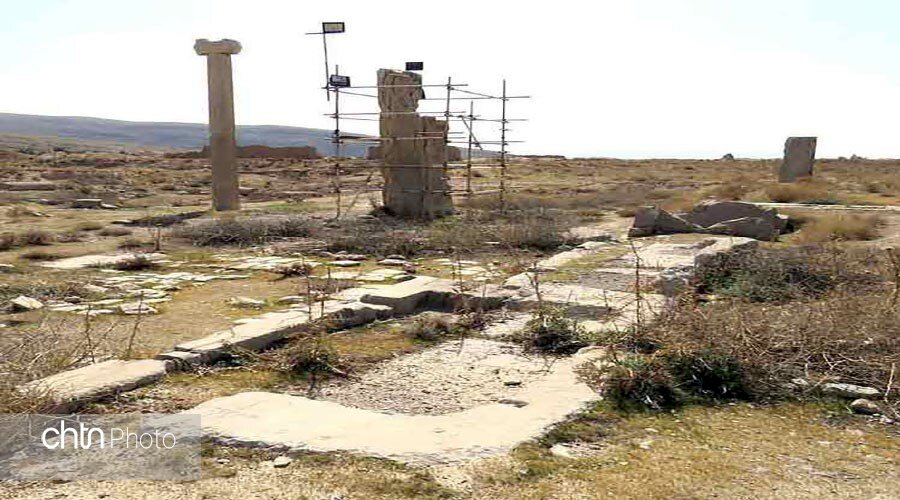Gateway to once Sassanid capital restored

TEHRAN – A team of cultural heritage experts has restored a stone gateway that once ushered people to Istakhr, the first capital of the mighty Sasanian Empire from 224 to 226 CE.
Istakhr (also spelled Estakhr) is located in the vicinity of the UNESCO-registered Persepolis, the ceremonial capital of the Achaemenid Empire (c. 550–330 BC).
The tall stone gateway, which sits next to the remains of the city’s historical mosque, is one of the landmarks of ancient the city, CHTN quoted Hamid Fadaei, the director of the World Heritage site, as saying on Saturday.
While the stone texture has been restored over the past decade, maintaining the protection of the gate for many years has been one of the most basic restoration requirements in this historic site, the official added.
In the first step of the restoration project, the team documented various aspects of the stone gate, and the images recorded the extent of the damage, he noted.
After classifying the damages according to their type, origin, and severity, a final protection plan was prepared, he explained.
Appropriate restoration and preservation strategies were considered, and the project was completed successfully, he mentioned.
The ancient city of Istakhr was the seat of local governments and a royal residence of Persian kings during the Sassanid era. Moreover, it acquired importance as a center of priestly wisdom and orthodoxy.
Istakhr rose to fame when Ardashir I, the founder of the Sasanian Empire, chose it as his residence in 224 CE when the Persian nobleman dethroned a lawful ruler in Persia, Artabanus IV, king of the Parthian Empire.
The builders of Istakhr often reused architectural elements from the monuments of Persepolis. The Achaemenid royal tombs of Naqsh-e Rostam are not far from Istakhr too.
Istakhr remained popular after the fall of Sassanids by Arab innovators. According to the Oriental Institute of the University of Chicago, the geographer Istakhri wrote that in the tenth century, its houses were built of clay, stone, or gypsum according to the wealth of their owners.
Furthermore, Istakhr has yielded many magnificent relics so far. An ancient trash pit at Istakhr proved to be a very valuable source of finds. According to archaeological sources, the entire site is perforated by several sewage or storage wellholes. The holes are often “locked” by caps of brick or stone, and therefore an approximately contemporaneous mixture of broken and discarded pots, personal ornaments, stone and bronze objects, and a large number of coins was preserved in them.
Today, Istakhr is nothing but a plain full of shreds, scattered architectural remains, and a few ruins. The walled-in area measured 1,400 by 650 meters and was surrounded by a ditch that was connected to a nearby river.
ABU/AFM
Leave a Comment